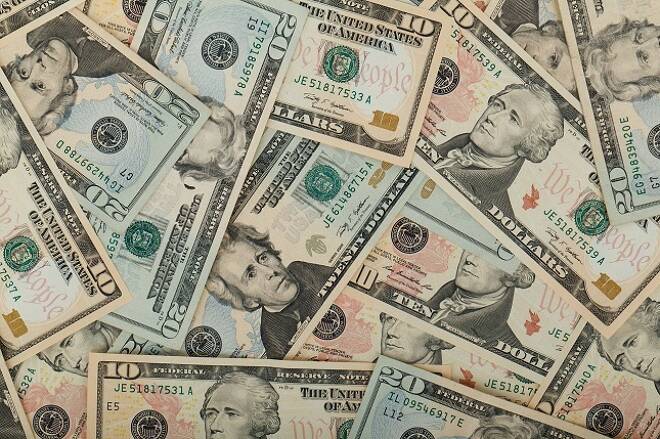Advertisement
Advertisement
Weak Finish Suggests U.S. Dollar Decoupling from Rising Treasury Yields
By:
While the benchmark 10-year Treasury yield hit its highest level since 2011 on Friday, the U.S. Dollar Index was struggling. Perhaps this indicates a decoupling by the dollar and Treasury yields. If the run up in Treasury yields begins to level off then we can expect to see a weaker U.S. Dollar this week.
Rapidly rising U.S. Treasury yields, a hawkish Fed Chairman and solid economic data was all it took to drive the U.S. Dollar higher against a basket of currencies last week. Even with a slight setback on Friday, the greenback still managed to post its best close since August 20. Nonetheless, with the U.S. November elections drawing closer, one has to wonder if last week’s spike to the upside represented the end of the road for this leg of the rally.
For the week, December U.S. Dollar Index futures settled at 95.305, up 0.568 or +0.60%.
A pair of better-than-expected U.S. economic reports started the ball rolling for the dollar on Wednesday. The ADP Non-Farm Employment Change showed the private sector added 230K jobs in September. This was higher than the 185K forecast. Shortly thereafter, ISM Non-Manufacturing PMI came in at 61.6, trouncing the 58.0 estimate.
However, it was hawkish comments from U.S. Federal Reserve Chairman Jerome Powell that spiked both Treasury yields and the U.S. Dollar Index higher. Powell suggested a hawkish scenario for interest rates when he said the central bank has a way to go yet before it gets interest rates to where they are neither restrictive nor accommodative. In its last monetary policy statement in September, the Fed said it would likely raise rates in December, three times in 2019 and once in 2020.
The December U.S. Dollar Index reached its high for the week on Thursday. On Friday, it posted an inside move while closing lower. Traders blamed the mixed U.S. Nonfarm Payrolls report for the weakness. While the unemployment rate reached nearly a 50 year low at 3.7%, job creation fell to its lowest level in a year. Additionally, year-over-year average hourly earnings, indicated that fears of inflation heating up may have been overblown.
While the benchmark 10-year Treasury yield hit its highest level since 2011 on Friday, the U.S. Dollar Index was struggling. Perhaps this indicates a decoupling by the dollar and Treasury yields.
If the run up in Treasury yields begins to level off then we can expect to see a weaker U.S. Dollar this week.
Australian and New Zealand Dollars
The Australian and New Zealand Dollars were hammered last week. The reason for the spike to the downside is the widening yield spread. Essentially let’s just say it is the divergence in the monetary policies between the hawkish U.S. Federal Reserve and the dovish Reserve Banks of Australia and New Zealand.
The Fed last month raised its benchmark interest rate for the third time this year by a quarter of a percentage point to 2.25 percent. Last week’s comments from Fed Chair Powell strongly indicated the central bank will get more aggressive with future rate hikes if necessary to cool a potentially overheating economy. Currently, the market is pricing in a December rate hike, but the Fed has also flagged three more in 2019 and once more in 2020.
Meanwhile, two weeks ago, the Reserve Bank of New Zealand left its benchmark rate unchanged with no plan for a rate hike. Weak business confidence data even suggests the next major move by the RBNZ will be a rate cut.
Last week, the Reserve Bank of Australia kept its official cash rate on hold at its record low of 1.5 percent. The cash rate last moved in August 2016, and there has not been an official cash rate increase since November 2010.
Currently, the yield spread on the 10-year U.S. and Australian government bonds was now “at the most negative it’s been since 1983”.
About the Author
James Hyerczykauthor
James Hyerczyk is a U.S. based seasoned technical analyst and educator with over 40 years of experience in market analysis and trading, specializing in chart patterns and price movement. He is the author of two books on technical analysis and has a background in both futures and stock markets.
Did you find this article useful?
Latest news and analysis
Advertisement
